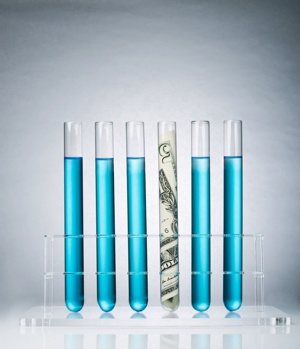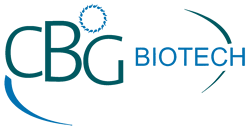 Most hospital, reference and university labs—whether histology, pathology, chemistry, cytology or veterinary—carefully evaluate capital expenditures, which are equipment costs that typically exceed $2,500. Lab managers need to be able to show hospital and university officials who approve capital expenses that these purchases provide long-term value to the organization and substantial economic benefits.
Most hospital, reference and university labs—whether histology, pathology, chemistry, cytology or veterinary—carefully evaluate capital expenditures, which are equipment costs that typically exceed $2,500. Lab managers need to be able to show hospital and university officials who approve capital expenses that these purchases provide long-term value to the organization and substantial economic benefits.
For better or worse, the sheer dollar amounts associated with a purchase often receive more attention than the long-term value that purchase provides.
Since solvent distillation units/stills are usually one of those closely reviewed capital expenditures, we want to provide some hard numbers you can use to prove the immediate economic benefits outweigh the upfront costs.
We also want to make clear that the numbers provided below are only estimates that will likely vary based on geographic location and other factors. However, even though these aren't exact numbers for every user, they are in the ballpark of what you can expect to pay—and save—when recycling solvents in your laboratory.
The Upfront Capital Cost
How much a solvent distillation unit will cost your lab is largely dependent on how much solvent volume you need to recycle onsite.
|
The Labor Costs
Operating the Solvent Distillation Unit: Whether you purchase a 2.5-gallon unit or a 10-gallon unit, each machine requires minimal staff attention—about 30 minutes per day. When you account for a lab technician's average hourly rate ($24–$29 per hour) and factor in healthcare costs and other employee benefits (that increase the rate to $29–$35 per hour) you can estimate that:
|
Generating Purchase Orders for Solvent and Other Consumables: The costs tied to generating one purchase order can vary greatly. After considering all of the steps associated with this task, from the generation of a requisition to the purchase order's approval, you can expect:
|
It's important to note that with an onsite solvent distillation unit you'll actually be reducing your solvent/consumables purchase order costs by 90–95%.
Receiving Solvent and Other Consumables: Receiving costs will vary based on the volume and frequency of solvent being purchased. On average, an individual in receiving (who costs your lab $20–$22 per hour) will spend approximately 15 to 30 minutes receiving one shipment. This means:
|
Again, this activity and its associated costs will be reduced by 90–95% when your lab recycles solvent onsite using a solvent distillation unit.
Stocking Solvent: Stocking costs tend to be a little higher than receiving costs because many solvents are hazardous and/or flammable. For light-volume solvent users, this frequently means the installation of a fire cabinet to store flammables; for heavier-volume users, this may require the purchase of various fire suppression systems, like sprinklers, and other items that add to infrastructure costs. For these reasons:
|
This activity and its associated costs will also be reduced by 90–95% when your lab recycles solvent onsite.
Solvent Waste Disposal: When labs don't recycle their own solvents onsite they may pay steep sums for solvent disposal. This is because prior to the solvent waste being picked up by a third party, it often needs to be aggregated (combining 5-gallon waste containers into larger 55-gallon drums) and sorted (grouping wastes with similar boiling ranges together). When you combine those additional labor costs with waste disposal company fees, you can estimate:
|
Labs that recycle their own solvent will only pay about one-tenth as much for solvent waste disposal. They may also reduce their EPA waste generator status through solvent recovery.
The Maintenance Costs
At CBG Biotech, we recommend that preventative maintenance (PM) be performed on our solvent recyclers once every two years (at least). During a preventative maintenance visit, skilled technicians clean and inspect a unit—replacing any parts or tubing and identifying any issues that may be negatively impacting its operation. On average:
|
Why Your Lab Will Immediately Start Saving Substantially
Many of the costs associated with recycling solvents in your laboratory are recouped relatively quickly.
Below we've provided examples to show you why.
These examples show how much your lab can realistically save on solvent purchases, labor and waste disposal in one year. Examples provided include labs that use light, moderate and heavy volumes of both xylene and alcohol.
|
Light Annual Usage of Xylene |
|
|
Annual Usage |
165 gallons |
|
Cost Per Gallon |
$12.00 |
|
Total Solvent Cost |
$1,980 |
|
Annual Disposal Cost (estimated at $6.50/gallon) |
$1,073 |
|
Direct Labor Cost |
$3,770 |
|
Administrative Labor Cost |
$600 |
|
Receiving/Stocking Cost |
$300 |
|
Total Annual Solvent Purchase, Labor and Disposal Cost |
$7,723 |
|
Projected Savings |
Total Annual Cost: $7,723 Projected Recovery: 95% Annual Savings With Recycling: $7,337 |
|
Moderate Annual Usage of Xylene |
|
|
Annual Usage |
440 gallons |
|
Cost Per Gallon |
$11.50 |
|
Total Solvent Cost |
$5,060 |
|
Annual Disposal Cost (estimated at $6.00/gallon) |
$2,640 |
|
Direct Labor Cost |
$4,200 |
|
Administrative Labor Cost |
$600 |
|
Receiving/Stocking Cost |
$300 |
|
Total Annual Solvent Purchase, Labor and Disposal Cost |
$12,800 |
|
Projected Savings |
Total Annual Cost: $12,800 Projected Recovery: 95% Annual Savings With Recycling: $12,160 |
|
Heavy Annual Usage of Xylene |
|
|
Annual Usage |
880 gallons |
|
Cost Per Gallon |
$11.00 |
|
Total Solvent Cost |
$9,680 |
|
Annual Disposal Cost (estimated at $5.50/gallon) |
$4,840 |
|
Direct Labor Cost |
$4,654 |
|
Administrative Labor Cost |
$600 |
|
Receiving/Stocking Cost |
$300 |
|
Total Annual Solvent Purchase, Labor and Disposal Cost |
$20,074 |
|
Projected Savings |
Total Annual Cost: $20,074 Projected Recovery: 95% Annual Savings With Recycling: $19,070 |
|
Light Annual Usage of Alcohol |
|
|
Annual Usage |
110 gallons |
|
Cost Per Gallon |
$17.00 |
|
Total Solvent Cost |
$1,870 |
|
Annual Disposal Cost (estimated at $7.50/gallon) |
$825 |
|
Direct Labor Cost |
$3,770 |
|
Administrative Labor Cost |
$600 |
|
Receiving/Stocking Cost |
$300 |
|
Total Annual Solvent Purchase, Labor and Disposal Cost |
$7,365 |
|
Projected Savings |
Total Annual Cost: $7,365 Projected Recovery: 90% Annual Savings With Recycling: $6,629 |
|
Moderate Annual Usage of Alcohol |
|
|
Annual Usage |
330 gallons |
|
Cost Per Gallon |
$15.00 |
|
Total Solvent Cost |
$4,950 |
|
Annual Disposal Cost (estimated at $6.50/gallon) |
$2,145 |
|
Direct Labor Cost |
$4,200 |
|
Administrative Labor Cost |
$600 |
|
Receiving/Stocking Cost |
$300 |
|
Total Annual Solvent Purchase, Labor and Disposal Cost |
$12,195 |
|
Projected Savings |
Total Annual Cost: $12,195 Projected Recovery: 90% Annual Savings With Recycling: $10,976 |
|
Heavy Annual Usage of Alcohol |
|
|
Annual Usage |
660 gallons |
|
Cost Per Gallon |
$13.00 |
|
Total Solvent Cost |
$8,580 |
|
Annual Disposal Cost (estimated at $5.00/gallon) |
$3,300 |
|
Direct Labor Cost |
$4,654 |
|
Administrative Labor Cost |
$600 |
|
Receiving/Stocking Cost |
$300 |
|
Total Annual Solvent Purchase, Labor and Disposal Cost |
$17,434 |
|
Projected Savings |
Total Annual Cost: $17,434 Projected Recovery: 90% Annual Savings with Recycling: $15,691 |
From these examples, you can begin to see why labs are able to offset the initial capital expense of a solvent distillation unit fairly quickly—on average, we see labs recoup the cost of a laboratory solvent recycler in less than two years.
Using the examples above, if your lab is a light-volume user of both xylene and alcohol, you could save $13,966 on solvent purchases, labor and waste disposal in the first year; if your lab is a moderate-volume user of both solvents, you could save $22,341 in year one; and if your lab is a heavy-volume user of both solvents, you could save $33,126 in the first year.
To see the bigger economic picture, compare these estimated savings from onsite recycling to the initial cost of a solvent distillation unit.
How Much Could Your Lab Save?
We understand that every laboratory uses different types and volumes of solvent. To better estimate how much your laboratory could save with onsite solvent recycling, use our free cost-savings-analysis calculator. If you have additional questions about our solvent recycling solutions for laboratories, contact us today.




